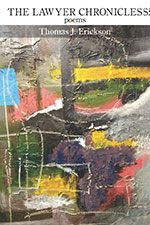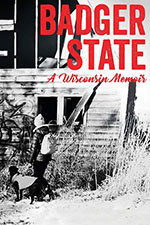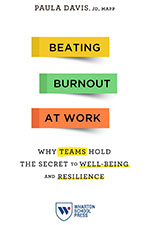 VERDICT: It’s a Keeper
VERDICT: It’s a Keeper
Civil Rights in America: A History
By Christopher W. Schmidt (New York, NY: Cambridge Univ. Press, 2021). 215 pgs. $34.99. Order, www.amazon.com.
Reviewed by Kathryn Lomasney
I found Civil Rights in America: A History unfortunately limited in its scope but interesting despite the limitation. The book centers around the historically shifting usage of the term “civil rights,” with excavation and discussion beginning in the post-Civil War period and ending with the present day. The phrase is certainly one that bears unpacking and additional definition. In a quick and informal survey of my friends and colleagues, many incredibly diverse definitions of the phrase were offered, lending credence to the necessity of this work.
The struggles that I witnessed in my fellows’ attempts to define “civil rights” mirrors the shifting nature of this phrase, from rising to prominence after the Civil War to its temporary decline and the subsequent reintroduction in the 1940s. The phrase reentered the national discourse in a meaningful way with the formation of the President’s Committee on Civil Rights by Pres. Harry Truman in 1946 to investigate issues blandly defined as related to the “preservation of civil rights guaranteed by the Constitution.” To be clear, the committee actually was formed in response to widely publicized atrocities that were committed against African-Americans (many of them military veterans) in the South after World War II.
The author provides analysis and insight into the use of the phrase during what we would now describe as the Civil Rights Movement. Use of the phrase at the time was less prevalent than one would expect, and the term was nearly entirely absent in some of the pivotal statements made by individuals spearheading or engaged in the seminal moments of that movement (for example, the phrase was almost never mentioned by the organizers of the Montgomery bus boycott or in press coverage thereof). After the success of the Civil Rights Movement, various groups attempted to shift or co-opt the phrase. The author analyzes and discusses these attempts, including ones made by people considered to be politically conservative, and concludes the attempts resulted in further difficulties in defining the phrase.
My most significant complaint about this book is the lack of information regarding some pivotal figures, including those whom the author refers to multiple times. For example, when discussing the President’s Committee on Civil Rights, readers are informed that two members were African-Americans, and several of the committee members are quoted or discussed later in the book; however, at no point are readers given even the briefest of insights into backgrounds of the members or even how many members there were.
Certainly this is a book with a very specific and needed focus. Nonetheless, additional details of the individuals referred to would have made it a more engaging and interesting read. The author might have realized this, because later chapters often include more detailed descriptions of some of the major players, though even in those cases, I found myself engaging in outside research to learn more.
In short, if either the phrase “civil rights” itself or the actions that are often described by the phrase are often on your mind or uttered in your presence, I expect that you would find this book a concise and useful read, but you might be left wanting a bit more.
Kathryn Lomasney, U.W. 2014, is litigation counsel with eXp Realty LLC and lives in Whitefish Bay. Aside from reading, she is an avid traveler and excited to return to the same when it is safe to do so.
 VERDICT: It’s a Keeper
VERDICT: It’s a Keeper
The Lawyer Chronicles
By Thomas J. Erickson (American Fork, Utah: Kelsay Books, 2020). 52 pgs. $16. Order, www.amazon.com.
Reviewed by Santana T. Flanigan
Thomas J. Erickson’s The Lawyer Chronicles is a book of poetry that draws inspiration from the author’s criminal defense practice in Milwaukee. Erickson’s poetry is concise and focuses on three prominent themes. First, the complicated trappings of street life for those accused of crimes: a lack of meaningful financial opportunities, substandard education, unaffordable health care and self-medication, cycles of violence, and easy access to drugs. Second, the often unacknowledged but evident fact that the justice system overwhelmingly casts Blacks as the victims and accused and whites as the administrators of justice. Third, the lawyer’s unique role as a detached observer but active participant in the legal process.
Erickson mixes street vernacular with thoughtful and personal insights to craft gritty, tight, and complex verses that are poetic and relatable to the reader. My personal favorites include “Blue,” “Zoom Court,” and “Speaking in Tongues.”
Santana T. Flanigan, Georgia 2006, is the general counsel of Rockdale County Public Schools, Conyers, Ga., an adjunct professor at the University of Georgia School of Law, and an associate magistrate court judge.
 VERDICT: Touchdown!
VERDICT: Touchdown!
Badger State: A Wisconsin Memoir
By Kathleen McDonough Mundo (Milwaukee, WI: Henschel Haus Publishing Inc., 2020). 249 pgs. $33. Order, www.amazon.com.
Reviewed by Richard Ebbott
As one of the Wisconsin diaspora who has regretted leaving for more than 50 years, I eagerly volunteered to review this delightful retrospection of life in the Badger State by Kathleen McDonough Mundo. And she didn’t disappoint in the least. My experience included growing up in a small town in south-central Wisconsin, being part of a high school graduating class of 102, and then attending the University of Wisconsin and the U.W. Law School. Hers was a move at age 7 from Highland Park, Ill., to Racine – a relatively big city where she lived for 11 years.
Want to Review a Book?
Please request a book and writing guidelines from Wisconsin Lawyer managing editor Karlé Lester, at klester@wisbar.org or (608) 250-6127. Reviewers may keep the book reviewed. Reviews of about 500 words are due within 45 days of receiving the book. Reviews are published, space permitting, in the order received and may be edited for length and clarity.
Much of this well-written book reads like a family journal. Kathleen (after reading the book I feel I know her too well to be formal, although I learned it’s never Kathi, especially not with a heart over the i) is the youngest of six children with a funny, fun-loving but rather shallow father and a hard-working, dedicated but not warm or emotionally sharing mother. Tom, the father, was hired as the general manager of the Racine Country Club, so the family moved into a large old house across the street.
Although Kathleen says that the unusual events are the ones you are likely to recall, she has included such a wealth of anecdotes and stories of daily family life that readers will easily compare experiences. The middle 1970s was a time when kids could wander at large all day and walk almost a mile to school (through tough Wisconsin winters).
In her family of six kids and 10 years between the youngest and oldest, there was a pecking order, with only Kathleen at the bottom. The children had a strict rule that no one ever told a parent on another sibling. So they devised their own means of retribution. I had never thought a scalding-hot tea bag could be a means of revenge, but when I read that if a tea bag is thrown accurately so it lands on bare skin, it sticks and can really burn, I understood.
You also experience Racine at that time with its heavy industry, its greatly varied ethnicities, and its schools, from Sacred Heart Grade School run by Sister Janet, an autocrat whose face could not tolerate a smile, to the mixing bowl that was William Horlick High School. The city’s seven high schools held a joint prom at the end of each school year.
According to the author, “Racine, like much of the Badger State, is a hodgepodge of cultures and people and religions and races….” Summers were a series of ethnic festivals, Greek, Armenian, Serbian, Italian and more including a big Juneteenth celebration, so everyone could experience other people’s heritage. July 4 brought the whole town together to show the United States at its best.
Kathleen and her family found their way through all of it. As she puts it, “Growing up in a family of six kids with one shared bathroom meant you’d better be able to get along with others.” And she shares more of her learned philosophy of life, such as, “Like it or not, parents like ours who were otherwise occupied with jobs or problems or the things needed to run a household of eight helped us all grow up to be adults capable of figuring things out on our own. It helped us to grow up like the rest of the kids around us – anything but entitled.” Kathleen sees economic levels as the greatest barriers.
I’m sure there is a reason for the image on the book cover but I found it rather bleak – unlike the content, which is warm and funny and poignant and speaks well of those good, hard-working, honest, and friendly people who are the Badger State.
Dick Ebbott, U.W. 1967, was an assistant district attorney in Rock County for three and a half years and then moved to Flint, Mich., where he continues a practice in civil trial work.
 VERDICT: Not for Me, Maybe for You
VERDICT: Not for Me, Maybe for You
Beating Burnout at Work: Why Teams Hold the Secret to Well-Being and Resilience
By Paula Davis (Philadelphia, PA: Wharton School Press, 2021). 117 pgs. $21.99. Order, www.wharton.upenn.edu.
Reviewed by Matthew Hallingstad
Burnout is not new. However, after a year like 2020 and a pandemic that lingers, the breadth and depth of burnout may be at all-time levels. In addition to adding yet another stressor, the pandemic also shut off people from many burnout-coping mechanisms (for example, gyms, recreational sports, dining out). Familiar with many of the commonly accepted best practices for managing stress and avoiding burnout but always seeking new approaches, I was very interested in Beating Burnout at Work: Why Teams Hold the Secret to Well-Being and Resilience, by Paula Davis, founder and CEO of the Stress & Resilience Institute. In this exceptionally quick read (under two hours), Davis sets forth her model for beating burnout, which centers on an acronym, PRIMED.
In the first third of the book, Davis helps readers understand the problem of burnout, defining the term, reviewing some (staggering) statistics, identifying the main causes of burnout, and detailing the many negative effects. She argues for the use of a holistic and systemic approach to beat burnout and introduces the PRIMED model. She spends the remainder of the book examining each of the six PRIMED pathways, dedicating one chapter to each:
- Psychological Safety and Psychological Needs: The Foundation
- Relationships: The Importance of Building Connection
- Impact: Why Do You Do What You Do
- Mental Strength: Or, Your Mind on Milkshakes
- Energy: Addressing Sources of Stress
- Design: How to Create Positive Change
Within each of those chapters, Davis includes some combination of assessment tools, specific actions to take, or general “ways of thinking,” but the approach is inconsistent and it seemed to me as though she was merely “bucketing” those items within their respective pathways without organizing the items in a manner that best educates the reader. As a result, the book seems like a suboptimally designed hybrid of a research review and a handbook.
More important, though, while Davis provides some of the data that led to her development of the model, she does not provide any data that proves that her model actually works or survives real-world application. And, even if PRIMED is an effective model, first-time users are bound to encounter difficulties or unanticipated consequences, remedies for which they will need to figure out on their own, which ultimately limits the usefulness of the book and further leads this reader to believe that the model has not been effectively tested.
Given that the “readable” content of the book is presented in just over 100 pages, it is unfortunate that Davis did not author a more fully developed book. She had room to more methodically present her case, include real-world examples to prove the effectiveness of the model, and provide trouble-shooting guidance to assist leaders who attempt to use the model. As it stands, this book seems like a bit of a rush job, incomplete and not as useful as it could, or should, be.
Matthew Hallingstad, U.W. 2005, practiced law for five years and now helps ensure that you get your Amazon packages on time.
